Small Business Role in Sustainability is Largely Untapped
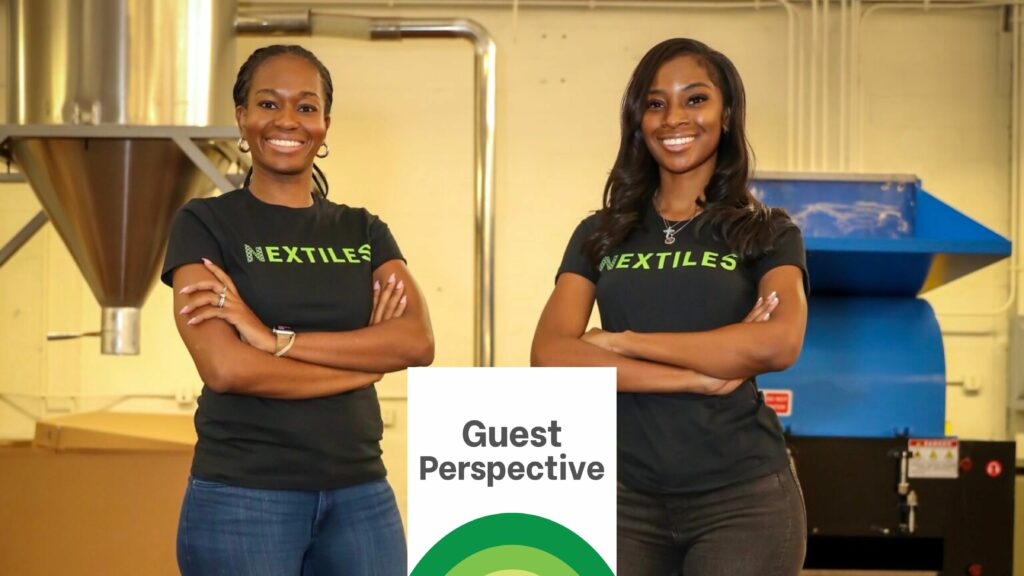
WAFA DINARO, EXECUTIVE DIRECTOR, OF THE NEW ECONOMY INITIATIVE, AND A LEADERSHIP COMMITTEE MEMBER FOR SUSTAINABLE BUSINESS NETWORK DETROIT During an internship with a recycler in New York in 2020, entrepreneur and environmental scientist Madeline Miller watched as the waste materials from textile companies were being processed in the facility, and something entrepreneurial clicked. In the “waste,” she saw home-building insulation that could be reused back home in Michigan while increasing energy efficiency in Detroit homes. From there, NexTiles was born, a Detroit-based textile recycling company that produces EcoBlow – a nontoxic, eco-friendly building insulation made entirely of recycled pre-consumer fabric from manufacturers, particularly automotive interior suppliers, and fashion designers. While her experience reflects the role small businesses can play directly in terms of creating eco-conscious products, every small business, no matter their product or service, can implement eco-friendly business practices. Unfortunately, many of the same challenges that prevent small businesses from thriving in general – limited access to capital and lending; a lack of technical assistance in finances, marketing, and business planning; and the inability to tap into a business support network for grants and resources – will prevent them from reaching their full potential in sustainability. Yet, nearly all the factors that help small businesses drive economic resilience position them to be a transformative force in sustainability. SMALL BUSINESS DRIVES SUSTAINABLE ECONOMIC RESILIENCE First, there are the sheer numbers. There are 33.2 million small businesses in the U.S. accounting for 99.9% of all businesses. They make up our largest employer group and accounted for almost two-thirds – or 17.3 million – of all jobs created from 1995 to 2021, according to the Small Business Administration. And they continue to grow, in 2022, there were more than 5.1 million new business applications filed. Second, small businesses are nimble and can move quickly to drive innovation. They are fueled by their founders’ ideas and life experiences and are often created to provide solutions to real-world problems impacting friends, families, or communities. Third, small businesses are invested in the social fabric of their communities and exist all around us, giving them nearly universal reach. They have a vested interest in their neighborhoods thriving that stretches well beyond business and adds further incentive for them to succeed. At the New Economy Initiative, we’ve spent the past two decades building a support ecosystem that helps entrepreneurs, startups, and small businesses build a more resilient economy within their own communities and Southeast Michigan. In the case of NexTiles, we provide funding to the Centrepolis Accelerator at Lawrence Tech University, which has played an integral role in NexTiles’ product development and growth. It is why we support similar nonprofit and locally grounded organizations that provide technical assistance, lending, and connections to small businesses throughout Southeast Michigan. Sustainability is the next logical step in expanding our mission. That is why the New Economy Initiative is pursuing a sustainability program to integrate with our traditional business support activities. NEI SUSTAINABILITY PROGRAM GOALS That program can accomplish a few major goals that will help small business play its role in sustainability by mirroring much of what we already do. It would include raising awareness about the bottom-line business benefits of sustainability that can be achieved through energy efficiency. It can help businesses identify how to integrate sustainable practices into their business plans that reduce waste while increasing efficiency and profits. It can help them access resources and grants available to increase sustainability. Chief sustainability officer is one more a hat small business owners are asked to wear – we need to provide a small business ecosystem that empowers them to fulfill it. Until we do, the collective power of our largest employer group to create a world that lasts for future generations is largely going untapped. Source for data: https://www.uschamber.com/small-business/state-of-small-business-now Be sure to subscribe to our newsletter for regular updates on sustainable business practices in and around Detroit.
Sustainability Business Network Detroit, One Year In
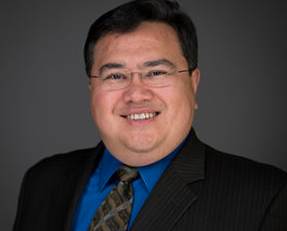
Sustainable Business Network Detroit was formed a year ago out of a study conducted by Erb Family Foundation and is helmed by Terry Barclay, chair, SBN Detroit, and CEO Inforum; Neil Hawkins, president of Fred A. and Barbara M. Erb Family Foundation; and Cindy Goodaker, VP, signature programs and communications, Inforum, along with a distinguished list of organizing members steeped in the sustainability community of Southeast Michigan. The group’s goal is to create a sustainable business ecosystem by convening a network serving as a hub for idea-sharing, programming, content, mentoring, and more – to accelerate the systemic adoption of sustainable business practices in Southeast Michigan. The primary belief is that business is a positive force for change and can and should be used as a force for good. For the past twelve months, the network has worked toward three core pillars; advancing and amplifying sustainable business practices in a centralized hub; creating urgency to activate; and articulating a sustainable way forward for the region. Here, Neil Hawkins shares his viewpoint and insights on the progress the network has made this year and the vision for the future. What is the impetus behind SBN Detroit? How did the idea arise and how was it developed? I’ve been involved with sustainability as it relates to businesses for some time and worked for Dow as their chief sustainability officer. Subsequently, Fred and Barbara Erb established the Erb Institute for Sustainable Global Enterprise more than 25 years ago at the University of Michigan. No program like this had existed in the world up until then, and it was very forward-thinking and visionary – the idea that business had a positive role to play in environmental sustainability. I came to the Erb Family Foundation as the president four years ago and at that time, we commissioned a study done by Sarah McCall – now working as SBN Detroit administrator – of what needed to be done to accelerate progress in sustainability within the region. That research was the impetus behind starting a network that would accelerate sustainability through business collaboration and progress – SBN Detroit. How do SBN Detroit’s three pillars work together to achieve its mission of mobilizing businesses and organizations to make Southeast Michigan a global leader in sustainability? Fundamentally the pillars are in place to help break down the barriers – silos. There are too many silos that exist in the region, and they prevent progress. These are silos between companies and across different-sized companies, and between companies and non-profits etc. All of those together are a barrier to making faster progress. These three areas of focus – urgency, centralization, and looking forward – are helping to tear down these silos and promote collaboration. The second statement was a fragment as written. I think it’s supposed to say: These three areas of focus – urgency, centralization, and looking forward – are helping to tear down these silos and promote collaboration. (I’m not sure my edits made that clear) A year in, what impact do you think SBN Detroit has made and is making? What is its greatest success so far? I think SBN Detroit has helped to completely change the level of dialogue within the region about sustainable business practices. I see it as a ‘before SBN Detroit and after SBN Detroit.’ We are seeing new collaboration and a lot more discussion about how we can work together to move forward, and we are seeing it on a completely different level. What specifically do you attribute this to? I think our biggest success in the last twelve months is the March 2022 event we had featuring Dr. Katharine Hayhoe on improving the dialogue about climate change. It was a remarkable event, and the timing was such that it was many people’s first foray into a public space since COVID had begun. The narrative of the event coupled with the interaction among people with like minds and like interests sparked renewed energy toward our collective goals. I also attribute our success to our steering team. I thank them for laying out a strategy and faithfully bringing people together. If the steering team works well together – and it has – we have a good shot at having continued success. What is the importance of collaboration when it comes to sustainability in this region? It is only going to be through collaboration that our region and ecosystem reach their full potential. SBN Detroit is focused on accelerating collaboration by creating opportunities for dialogue and action. We’ve accomplished this, and I see the fruits of it already. Excellent groundwork has been laid. What are your thoughts on SBN Detroit as a network? I think SBN Detroit represents many networks and is not a single network. This is still playing out a bit, and it’s a good thing. As long as we can keep companies and nonprofits and different universities and institutions involved and collaborating and working together that’s a great thing. What do you see as the primary obstacles to network formation, and how can they be overcome? The key obstacle is competition – competition between businesses, between businesses and nonprofits, between nonprofits and universities, between universities and other universities, and so on. The key thing we all have to focus on is that this is not a zero-sum game. By collaborating we make the pie bigger for everyone. There is growth here to be had and a lot of investment to come. We can all share in that growth if we are working together. This will position metro Detroit well. What do you see as the corporate-level impact of SBN Detroit? Having come from corporate, what I see through SBN Detroit is a renewed sense of group action and focus on the region, the Great Lakes, and the planet. Pre-COVID some silos existed, and then you throw in a pandemic that forces people to not even go into their workplace, and it is significantly exacerbated. We have started to create a sense of urgency and
An Interview with Detroit’s New Director of Sustainability
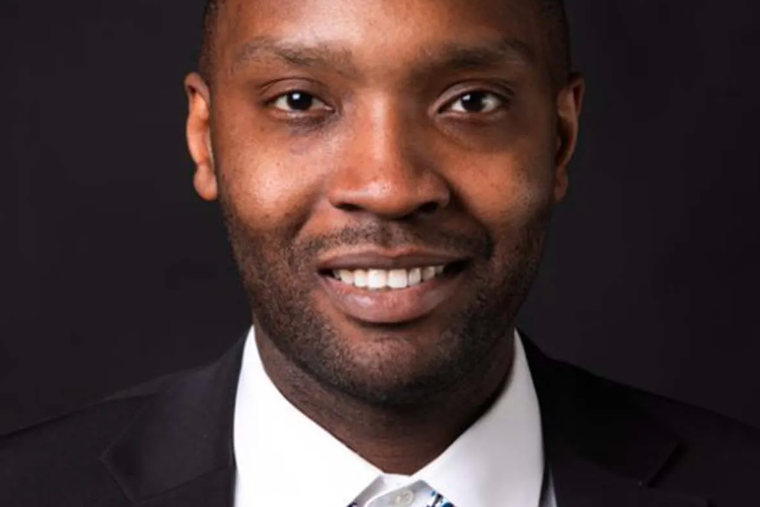
Jack Akinlosotu, Detroit’s new director of sustainability, sees sustainability opportunities in Detroit’s large geography, mobility industry focus, and other characteristics as he begins to immerse himself in the community. Akinlosuto came to Detroit from Washington, D.C., where held posts at the Department of Energy and Environment (DOEE), the Clean Energy Institute, and in private industry. He also has held positions in New York City, San Francisco, and Seattle. Immediately before coming to Detroit, he served as the senior product manager at Oracle Energy & Water, where he led partnership outreach and software development of the company’s product that helps utilities find, reach, and enroll limited-income customers in financial assistance and energy efficiency programs to lower their utility bills. Previously, he worked as the energy program specialist at DOEE to coordinate multiple renewable energy projects, including community accessibility to solar power, electric vehicles, and green financing. SBN Detroit spoke with Akinlosotu about his vision, how he’ll align strategies with the city’s Sustainability Action Agenda, and his top priorities in his new position. Q: What role does environmental sustainability have for a city the size, scale, economy, and density such as Detroit and how will you approach it? A: When I first came and visited Detroit I was surprised at the geographic scale. There is a lot of space and land. For a city this size to have this much unused land is unusual, and that provides opportunities here in terms of sustainability. There is ample space to scale, deploy and set up solar power and things like that. Also, Detroit is the Motor City and is in a good position to be the frontrunner in the EV revolution. If we deploy EVs in smart ways we will continue Detroit’s history of being the leader in mobility and that’s a great opportunity for economic sustainability as well. Q: What challenges do you foresee ahead of you, for your office, as you move ahead with a sustainable mission for the city? A: The biggest challenge is making sure we are all hitting our climate goals. When it comes to scaling climate change, that’s a challenge every city faces. There is a lot of work to do and coordination and collaboration need to happen. We need to make sure all parties are in alignment for success, and some challenges come with this. We also need to ensure that the people who have historically been left behind are included as part of the process. Q: Conversely, what opportunities do you foresee? You are quoted as saying “There is a great deal of opportunity in Detroit to be more creative in developing lasting sustainability. The sustainability programs we need will be a transformative leap for Detroit.” What does this mean for the businesses and people of Detroit? A: With all the work at hand there are significant opportunities to bring along a new workforce. For example, we need to work on making these older buildings and also residences energy efficient and we need a workforce to do that. We need to deploy and scale the use of solar energy and we need people to do that. There are a lot of opportunities to align climate goals with new jobs. We also need to focus on putting programs in place – such as deploying renewable energy – that help people with limited income. I see this as an opportunity to build a more sustainable economy and more sustainable communities. Q: How do you foresee working with businesses in the city to help them to become more sustainable? Or equitable? A: It’s important that we all work together to help businesses in our region hit their climate goals. In addition to sustainability, there are a lot of financial upsides to making buildings more efficient so there are several “wins” here. Q: What does the Sustainability Action Agenda look like now as you work to create a more sustainable Detroit where all Detroiters thrive and prosper in an equitable, green city and have access to affordable, quality homes? A: There is work being done on many fronts to hit our goals and inform an updated Detroit climate strategy, including the following four key priorities: -Electrification of the city’s vehicle fleet -Transitioning municipal buildings to energy efficiency and -Deploying solar and other measures of clean energy to help with decarbonization -Focus on vulnerable communities and the city’s overall resilience We are working to help vulnerable residents across Detroit by setting up resilience hubs for when there are outages and protecting homes with basement backup retrofits and things like this. The Sustainability Action Agenda is informing the Detroit climate strategy and this work. And the goal is to work as fast as possible. Q: What changes /impact do you expect to have made a year from now? A: On a personal level, I’m new to the city and have been working to intentionally familiarize myself with the community by reaching out to individuals and groups who have been leading the on-the-ground work in their neighborhoods. My goal is to create good relationships so that I understand and hear their needs and what the residents and businesses want out of our plans. I look forward to executing these plans and being further ahead a year from now. In terms of my responsibilities as the director, I plan to deploy as much renewable energy as possible within communities in the city. We will see that progress a year from now. We will see more EV charging stations across the city, and a lot of that work is being done in this area now. The city recently converted its entire municipal parking department fleet of 48 vehicles to all-electric and has deployed four electric buses as part of the bus fleet conversion. We need to keep this momentum going, and we will. Q: What does a successful collaboration between city departments and agencies look like for sustainable growth in the city? A: Keeping all lines of communication open is going to be
A Social Investment Model Designed to Give Power to Residents and Local Businesses
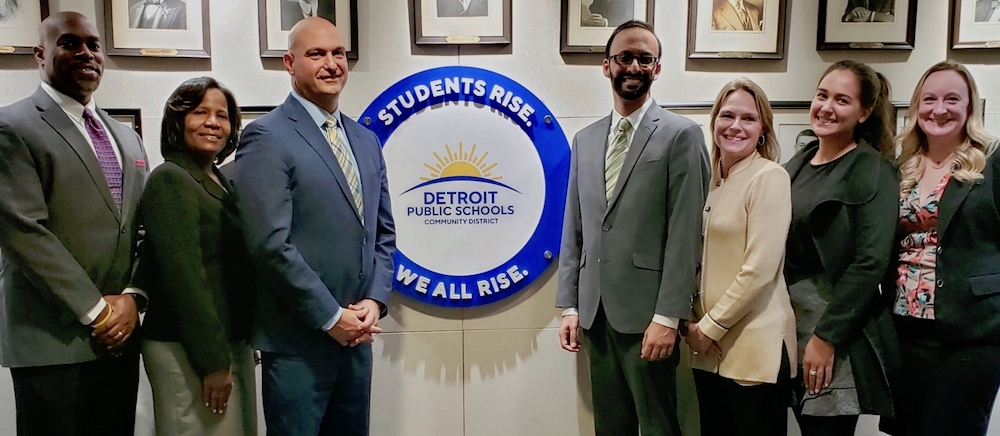
Rishi Moudgil leads the GreenLight Fund of Detroit, a locally driven, cross-sector, community-centered model to collectively identify critical paths to prosperity and invest in equitable social impact programs for children and families facing economic barriers in Detroit. SBN Detroit spoke to Moudgil about the model, sustainability, and impact on Detroit residents, businesses, and stakeholders. Q: Tell us about GreenLight Fund – what is the impetus behind it? A: We are focused on tackling poverty and its effects on residents by investing in solutions that complement the local landscape and boost the existing ecosystem with a proven model that has had a track record in other urban areas. We believe that for a social impact model to succeed and scale it must be aligned directly with who it serves and therefore local folks must drive the process of both determining their needs and selecting the ventures we invest in. It comes back to the challenge of pushing into a community versus being pulled. Our unique model is pull-through. We organize the stakeholders and local advocates to ensure that only programs that align with their needs and have high quality are brought in. Q: What are examples of programs you’ve invested in and the outcomes? A: A workforce program example is the Center for Employment Opportunities. We launched this in Detroit, and it offers immediate and comprehensive employment options for those who have been incarcerated. It’s a multistage model that helps folks to gain immediate employment and put them on a path for long-term work. This dramatically reduces the human cost and financial costs of returning to the justice system. They also partner with existing organizations to shift policy measures that benefit thousands of residents to stabilize their lives and gain employment. Another workforce program is the New Teacher Center, which provides new instructors with embedded support to enhance teaching practice and retention. This builds sustainability within their jobs and student learning gains in the classroom. The program has trained over 150 veteran teachers who mentor new teachers with evidence-based support and it’s reducing the turnover rate in the Detroit Public Schools community district. These programs each came by a community-led process where local residents helped determine the gaps in their communities. We also then hire Detroiters to run the new programs. Q: Relating it to sustainability and businesses in Southeast Michigan – what role does economic sustainability play in your investment strategy in Detroit? A: The key foundation for people to prosper is a combination of economic stability and to have opportunities to advance. Workforce opportunities are critical, and in a place that has been plagued by disinvestment for so long, workforce and economic programs are not enough. We need to wrap around human services transit, housing, education, and more. There are so many topics related to creating an economic foundation for individuals and businesses. Q: What role does environmental sustainability play? A: We can’t have stable places to live, work and play unless the environment is stable. And low-income neighborhoods are some of the most environmentally unsound areas, so this exacerbates a host of problems that continues the cycle of poverty. But where development occurs, home ownership will follow, and thus begins the process of building a more sustainable community. Q: Your website says, ‘Our deep connection with the community and strategic partnerships help organizations ramp up and start producing direct, meaningful change. This ongoing support enables organizations to thrive over time.’ How does this work? A: What we are doing is shifting an approach of social investing to both trusting residents directly and developing stronger outcomes. We rely on residents to choose their destinies. We raise unrestricted capital from partners around the city and hand the funding decisions back to local stakeholders. Deep and ongoing trust is the key ingredient toward achieving the best outcomes. After we launch, we hold a seat on their board, shepherd additional partners and resources, and help create a path of success. Q: How do you account for ROI in your investments? A: We are completely focused on social ROI, as are all of our social investment recipients. We co-develop social impact metrics with both our communities and organizations before we begin operations so there is a clear set of performance outcomes we all agree on. Each organization has a set of outcomes that we all pull together toward achieving, and we know that if these goals are achieved then we are achieving the goals desired by our stakeholders. Q: What’s the largest hurdle you face? A: The biggest challenge is the people and families that have been in some of our neighborhoods the longest have received a disproportionate brunt of the disinvestment. There is no silver bullet. Multiple efforts need to be tackled over the long term. We have to be honest about how we all got here and have difficult conversations about race and gender and inequality. So, one of the largest hurdles is alignment. Are the solutions properly aligned to the true needs of the people and planet and are they sustainable to create lasting change over time. Q: How do you see the city’s Sustainability Action Agenda aligning with the work you are doing? A: We are completely aligned with the agenda and believe we need integrated action. This means centering people and the planet simultaneously. We can no longer isolate variables and expect progress. Sustainability and social impact goals must be front and center as we build toward the future. Be sure to subscribe to our newsletter for regular updates on sustainable business practices in and around Detroit.
Eastern Michigan University – Steam Heat, Solar Panels, and a Recent Bronze STARS Rating
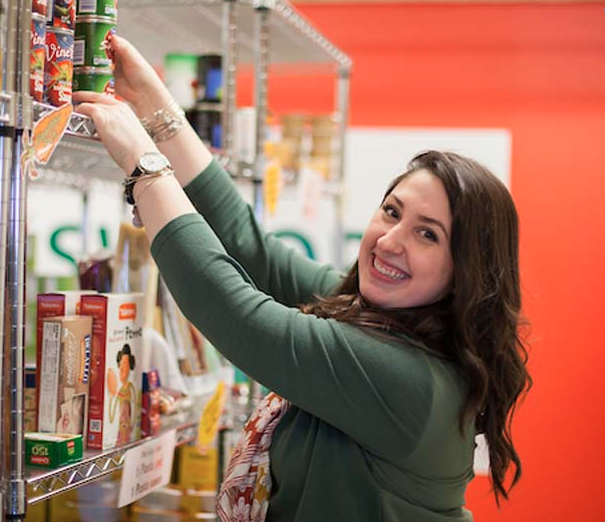
Eastern Michigan University approaches sustainability through a systemized framework and a community-derived mindset that together drive several sustainability initiatives and sustainable infrastructure endeavors on campus. For its sustainability framework, EMU uses the Association for the Advancement of Sustainability in Higher Education (AASHE) and its Sustainability Tracking, Assessment and Rating System (STARS) system and has developed a President’s Sustainability Commission, comprising a broad array of offices and people across the university to develop and execute sustainable practices. SBN Detroit spoke to Tom Kovacs, chair of the president’s sustainability commission and professor of meteorology and climate in the Department of Geography & Geology, about EMU’s sustainability efforts. Q: What are some of the recent sustainability initiatives you’ve put into place? A: First, we are very proud to have completed our STARS certification process and received Bronze Certification. We know that there is room for improvement, which is what we are working on this year. One of the areas we scored lower on is engagement, so to that end, we are building sustainability information into our orientation for 2023 and also are doing a lot more to let people know the sustainability commission exists and inviting people in to help with our efforts. We also very recently partnered with a sustainable mobility solution – Spin Scooters – as the exclusive scooter provider on campus which is helping a lot with student and staff transportation. Another development is a new partnership with EnergySage. EnergySage provides a marketplace that connects interested parties to vetted installers. You simply list your needs, and the various installers provide you with a quote and basically compete for your business, so you ultimately get the best deal. There is also an educational component of EnergySage that offers advisors to help work through the options, as well as a full library of resources on clean energy, and how to live more sustainably. This collaboration helps us improve our STARS ranking and benefits the EMU community so it’s a win-win. Q: How is the university’s heat powered? A: We have a 55-ton cogeneration system that is powered by natural gas and produces electricity and steam. The system supplies approximately 98 percent of the heat and 93 percent of the electricity to the 800-acre campus. The unit will create an annual reduction of 21,305 tons of carbon dioxide (CO2), equivalent to 78.2 million miles driven by an average passenger vehicle – or the preservation of 260 acres of forests. Q: What are some other examples of campus infrastructure focused on sustainability? A: We have solar panels installed at bus stops lining the perimeter of campus and one in the middle of campus. The energy from the sun is stored in the battery assemblies to be utilized during the evening hours to keep travelers safe. We also have a student-led Giving Garden that provides an opportunity for staff, faculty, students, and Ypsilanti residents to grow fresh produce. It’s also used to educate local preschoolers and other students in the area. There is a new composting effort underway, and the garden provides locally grown food to the Swoops Pantry. Q: What is the Swoops Pantry? A: The Swoops Pantry was initiated by a former EMU student and is run by a leadership board of faculty, staff, students, and alumni volunteers. It operates as a sustainable resource for food-insecure students. There is a large stigma involved so they work hard to make things discreet and anonymous. Similar to Swoops, we also recently initiated an EMU Career Closet that provides apparel for students going on interviews. This is a great resource for those who don’t have the means to shop and purchase extra clothing. Q: The dining services in EMU dorms are managed by Compass Group’s Chartwells Higher Education Dining Services. What does this mean in terms of sustainable food practices? A: We shifted to privatized dining about six years ago and work with Compass Group to make dining a more sustainable endeavor. They’ve partnered with local community gardens; they work to incorporate composting; they work to limit waste; and they host a number of events such as Meatless Mondays and Farm to Fork luncheons. They also host a teaching kitchen. We have people from their team who volunteer on our Sustainability Commission, and they will be speaking at our student orientations on sustainability. Q: You also have an office supply program – Partnering for Sustainability. A: Yes, in 2019 we partnered with Office Depot. This allows the EMU community to purchase greener office products and select greener options when available. Recycled bags and reusable plastic totes are also used for delivery versus boxes. Q: What are your areas of focus for the near future? A: We’ll continue all of our efforts in the initiatives we’ve discussed here and seek to enhance them where appropriate. And again, coming off of the recent STARS certification process, our big focus is engaging the community in all of these efforts and more to work toward a greener campus and surrounding area. Be sure to subscribe to our newsletter for regular updates on sustainable business practices in and around Detroit.
Mitigating Climate Risks to Michigan’s Forestry Industry

More than half of Michigan is forested, with 20 million acres making up a vital part of the state’s landscape. Millions of acres of Michigan forest land are used to produce timber, a renewable and sustainably managed resource that supports many industries. The forests also provide other values, including wildlife habitat and watershed protection, and also help to sustain biodiversity. According to the Michigan Department of Natural Resources, the state’s forest products industries provide direct employment to almost 42,000 people, leading to $13.4 billion in economic output. Since 2014, jobs directly provided by forest products industries have increased by 9.7%. SBN Detroit spoke with DNR state forest planning and operations manager David Price about the impacts of climate change on Michigan forests, the trickle-down effect, and what can and is being done to mitigate risk. Q: How is climate change impacting forestry in Michigan? A: Forests have always been associated with Michigan. They’re a huge part of our social and economic fabric. Our forests support direct forestry jobs and also many other secondary industries. Trees are also important to our general well-being, mental health, and recreational pursuits. They help to regulate the global climate, absorbing a substantial portion of the fossil-fuel carbon emissions we humans produce. Climate change is driving concerns about forest health and productivity in many ways. Michigan is growing warmer and wetter, and there are projections that by the end of the century, the climate will be more like present Arkansas. Cold winters control and kill off certain insects that can be harmful to trees. Warmer winters mean these insects can be more persistent and harmful. Combine that with the fact that warmer weather can stress certain tree species and make them more susceptible to drought and less resistant to insects and disease, and we have a big problem. In Michigan, a good example of this is the hemlock woolly adelgid. We’ve been battling to contain this insect because it’s threatening to kill our hemlock trees along the coast of Lake Michigan. Cold winter weather helps to control the scale of this insect that spreads fungal disease, and warmer winters directly correlate to less winter mortality. There are operational considerations that climate change is causing as well. If the ground does not freeze, it’s significantly harder to harvest timber without causing extensive damage to the soils, potentially contributing to sediment moving into streams and wetlands. In Michigan, we have indigenous species such as red and jack pine, aspen, and boreal – spruces and firs – that are at the southern-most extent of their natural range in Michigan and they are not able to move quickly and adjust as the climate changes. A potential decline in the health and productivity of these tree species due to climate change will harm the values that they provide, including timber production, wildlife habitat, and carbon storage. An excellent example of this is the potential decline of jack pine forests in the northern Lower Peninsula which would cause a loss of habitat for the Kirtland’s warbler, a bird that is endemic to Michigan, recently removed from the endangered species list and proposed to be the new state bird of Michigan. So, as you can see, climate change is affecting our forest health and productivity in several ways. Q: What are the implications regarding business and the economy in Southeast Michigan? A: Michigan has a robust $22 billion forest-products industry. Most of the timber is harvested in northern Michigan, but secondary manufacturing occurs throughout the state, including Southeast Michigan. Many are surprised that Wayne County itself generates over a billion dollars in the forest products industry. The county’s paper products industry supports over 2,800 jobs alone. Think about sawmills in northern Michigan that then distribute products that are then sold at Menards, Home Depot, etc. This directly contributes to home construction in Southeast Michigan, which is also a huge industry. The bottom line is, maintaining a healthy and productive forest throughout the state is directly related to the economy in Southeast Michigan and the economy of the entire state. Q: What can be done to mitigate the risk to our forests, and what is the DNR doing about this? A: This is a million-dollar question. The happy news is that we can do things to change the outcome and the DNR has many initiatives in place. One simple thing we can do is plant trees. There is a lot of vacant land in northern Michigan that used to be forested. These areas are prime for reforestation. Planting trees is a great way to utilize nature for removing carbon from the atmosphere, and it’s underutilized in the state. The DNR plants over six million trees per year, most replacing forest that’s been harvested. The DNR has also initiated The Big Wild Forest Carbon Project, the first project in the nation to leverage the carbon storage capacity of trees on state forest lands. This pilot project captures carbon that is sequestered in trees and generated carbon credits. DTE Energy purchased the first decade of carbon offset credits to be used in their commercial natural gas programs. On a smaller scale, we are working offsetting power usage at our fish hatcheries through solar energy. We are also working with a company called Circle Power to develop two utility-scale solar energy projects on brownfield sites in the Upper and northern Lower Peninsulas. The DNR also partners with Michigan State University for some important research projects. First, we are evaluating assisted tree migration, which is a climate change adaptation strategy that involves moving trees or their genetic material from a known location to an area where they are presently well-adapted to an area where they are not currently present or prevalent, but where the trees may be better adapted to future climate under climate change projections. We are experimenting with new species and genetics of species and also identifying seed sources that may be better climate adapted to Michigan in the future to help the forest to
Joe Louis Greenway Project Aims to Transform Abandoned Rail Corridor into 27.5-Mile Recreational Pathway
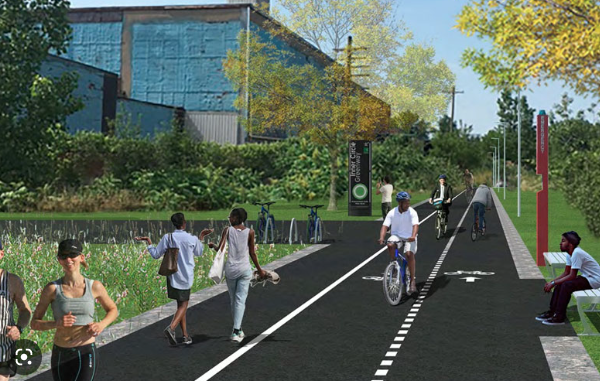
The Joe Louis Greenway is a 27.5-mile pathway that will connect 23 neighborhoods and the cities of Detroit, Hamtramck, Highland Park, and Dearborn to each other and to the Detroit riverfront, Dequindre Cut, Belle Isle, pedestrian/cyclist crossings at the Ambassador and Gordie Howe International bridges, and other trails. Upon completion, more than 40,000 residents will be able to walk to the greenway within 10 minutes. The project is based on a Framework Plan funded by the Ralph C. Wilson, Jr. Foundation and shaped by voices from the community. The General Services Department team led 14 community meetings and attended more than 40 other events and meetings to gather feedback from residents to create the plan. The project is being recognized for its focus on inclusion, and for bringing a wide range of voices to the table while fostering citizen advocacy and activism. In October, The American Planning Association awarded the 2022 Advancing Diversity and Social Change in Honor of Paul Davidoff Award to the project. The greenway has received significant state and federal funding. And earlier this month, the city of Detroit, Detroit Riverfront Conservancy, and Joe Louis Greenway Partnership announced the Unified Greenway Partnership, an alliance that will raise funds to complete the Detroit Riverfront from Belle Isle to the Ambassador Bridge, build the Joe Louis Greenway around the city, and endow both projects for long-term management. SBN Detroit spoke to Brad Dick, COO for the City of Detroit, about inclusion, the use of space for social justice, and the greenway’s potential impact on area businesses and new business development. Q: There is a significant amount of funding from different entities coming in for the greenway. What are your thoughts on the ‘investment in urban spaces’ and the implications this has on small businesses in the area, as well as the opportunities this represents for new business development? A: The Joe Louis Greenway (JLG) is a historic investment across multiple cities and neighborhoods, including Detroit, Highland Park, Hamtramck, and Dearborn. The greenway will transform a blighted, abandoned rail corridor into a beautiful park running through Detroiters’ backyards. To date, the project has removed more than 68,000 cubic yards of debris (which could fill 22 Olympic-sized swimming pools) and nearly 23,000 old, illegally dumped tires from the area, and is investing in permanent infrastructure and beautification that enhances the quality of life and provides equitable access to public resources. Investment in urban spaces brings communities together and provides economic opportunities for local entrepreneurs and businesses to grow and expand, creating jobs, and economic growth, as well as wealth-building opportunities for our residents along the greenway itself and in adjacent communities. Our goal is to make this greenway a destination, which will attract people from all over the region, creating a strong market for existing and new small businesses. The greenway will also provide safe routes, and comfortable connections for both employees and business owners to get to work. Q: How has this project established itself as a model for neighborhood stabilization and for addressing community-based issues as it pertains to social justice? A: Residents have been at the core of the planning process for the Joe Louis Greenway, and hundreds of Detroiters attended community meetings held as part of the Joe Louis Greenway Framework Plan. The Joe Louis Greenway Citizen Advisory Council helped guide the planning process and continues to advocate for the Greenway. The group of dedicated individuals that guided the Framework Plan represented all seven of Detroit’s Council Districts, as well as residents of Highland Park, Dearborn, and Hamtramck, which also touch the Greenway. Joe Louis worked tirelessly to advocate for the rights of Black Americans and to promote social justice in the United States. The Greenway is more than a tribute to his legacy. It celebrates Joe Louis as a role model and as someone whose values can guide this project and the Detroiters it brings together. Q: What are the equitable economic development benefits of this project? A: The JLG is about access – including access to opportunity. Intentional planning, outreach, and action will create economic opportunity for residents in every neighborhood that the Joe Louis Greenway touches. The economic development benefits will include blight reduction and beautification, housing stabilization, preservation of affordable housing, job training, and career opportunities, existing and new small business support, and light industrial development opportunities. The Neighborhood Planning Study, led by Planning and Development Department, will continue the dialogue with the community and focus on opportunities for community and economic development along the Greenway. Q: How will the Neighborhood Planning Study support social justice as well as economic and business/job opportunities? A: As Mayor Mike Duggan has said, the impact of this greenway will extend far beyond the boundaries of the path itself, creating opportunities for Detroiters to thrive. When complete, the greenway will generate jobs and affordable housing opportunities, and ease mobility barriers that have challenged Detroiters for decades. It also will help Detroiters build generational wealth for homeowners by increasing their property values through the beautification and economic investment that the greenway will bring to their neighborhood. Throughout the planning process, residents voiced a need to heal long-standing urban trauma, particularly concerning urban renewal that ultimately displaced Black residents who called those neighborhoods home and whose businesses were torn down. By acknowledging that past trauma, promoting dialogue, and providing new opportunities for healing, the greenway can be a place where Detroiters advance a better understanding of racial justice. Q: How is the greenway helping to build a more sustainable Detroit? A: The design of the greenway incorporates stormwater management to reduce flooding impacts, native meadow plantings to provide bird habitat, and trees throughout to provide shade and help with air quality. Sustainability, however, goes much further than just the environment. This project will impact many facets of sustainability, including public health, economic development, neighborhood stabilization, park access, and connectivity. The Framework Plan ensures that the Joe Louis Greenway will transform the infrastructure that previously divided neighborhoods into one that unites community and reconnects natural systems, catalyzes economic redevelopment, and supports a resilient social network. The
Working at the intersection of Business, Education, and Research for a More Sustainable World

The Erb Institute at the University of Michigan has a mission to create a sustainable world through the power of business. The institute is a partnership between the Ross School of Business and the School for Environment and Sustainability, where students and business partners work together to fulfill this mission. What does this translate to, how does it work, and what impact does it have on Southeast Michigan Businesses? We talked to the Erb Institute Managing Director Terry Nelidov to find out more. Nelidov began his career as a US Peace Corps Volunteer in Paraguay in the early 1990s. Later he served as founding director of INCAE Business School’s Business Leadership for Sustainable Development Network in Latin America, as General Manager for AmeriCasas (a startup land-development company in El Salvador), and then country representative for Catholic Relief Services in Peru. He holds a BS in Industrial Engineering from Stanford University and an MBA from IESE Business School in Spain. Q: The mission of the Erb Institute is to create a sustainable world through the power of business. How do you approach this? A: Yes, this has been our mission for over 25 years and remains our mission today, although our areas of focus have expanded and evolved. When Fred and Barbara Erb endowed the institute in 1996 the focus was on two areas: teaching and research. Over the years the program has evolved to encompass applied research and impact. Meaning we now work to translate research results into practical management tools, case studies, and frameworks for business leaders to put into practice. So today, we have expanded how we think about the work we do into three main pillars; research, teaching, and business engagement. The latter challenges us to be involved in the global dialogue on sustainability and to bring back new questions to inform our research and teaching, while actively sharing the thought leadership of our faculty and students to inform that global conversation. One way we do this is by leading and taking part in global sustainability events such as the SB 2017 and 2019 conferences, the Innovation Forum UK, and more. The Erb Institute is so much more than a teaching institute – it’s about making an impact with businesses and nonprofits focused on sustainability through teaching and research and then sharing the work that comes out of that to scale up our impact in Michigan, across the United States, and beyond. Q: How are you engaging with businesses? A: Great question and my best response would be simply two examples. Recently we hosted the Michigan Business Sustainability Roundtable (MBSR) to bring together senior Michigan business leaders from Kellogg, Dow, Meijer, and others committed to working toward transformational change in social and environmental performance and asked what challenges they have in achieving their goals at the policy level, and how we could support them in advocating together for climate change and racial justice in Michigan. This was a six-month process. We are looking to deepen our connections with policymakers and advocates at the state level and use our collective voices to raise the bar on business, sustainability, and justice in Michigan. The second example involves a groundbreaking research project with Ford Motor Co. In 2018 Ford came to us with a simple but intriguing question, “How can we measure the impact of smart mobility on the human condition?” We launched a two-year research project, co-hired a postdoctoral research fellow, and created the Ford Model of Human Progress. What was particularly exciting about this initiative was that a year later, HP Enterprise attended a Sustainable Brands event where they heard about the model and then took it back to Silicon Valley and began adapting Ford’s model to HP Enterprise’s work in the tech industry. Q: What sustainability issues do you focus on beyond the environment? A: While climate change, water, biodiversity, circular economy, and plastics remain at the forefront, the scope of sustainability has expanded to include a range of social issues, even the very concept of justice and the role of business in a just society. Businesses are being called on to play a significant role here…to support social issues, such as access to education, access to health, and employee engagement and well-being. So, we’ve expanded with this evolution. Indeed, social justice is a significant focus area within our new five-year strategic plan, which focuses on preparing “architects of change” who can work at the intersection of business, sustainability, and justice. Q: How do you think the graduates of the Erb Institute impact businesses? A: We have alumni working in leadership positions in 17 countries. I can point to three examples of how they are making a significant impact. The first is Monique Oxender. While still studying at the Erb Institute, Monique took an internship at Ford and then a full-time position, helping to create their human rights function in the early 2000s. She is now chief sustainability officer at Keurig Dr Pepper, a global platform for sustainability impact. All of that began with her Erb experience. A great example of nonprofit leadership is Laura Rubin, our first Erb graduate. She worked on the Huron River Watershed Council for 25 years and is now a recognized leader in the Midwest and Great Lakes Region in water crisis and habitat issues. A third example is Rep. Joe Tate, who went into public service and politics and was recently elected as the first Black speaker of the Michigan House of Representatives. Interestingly, he was also a USMC Veteran and a former NFL offensive lineman! Q: How do you think the work you are doing at the Erb Institute impacts businesses in general? A: First, the students in class today will be in leadership roles in 10 to 15 years. Second, we make an impact through the power of our ideas and the research of our faculty. The innovations that come out of working with students, researchers, and professors are the ideas that are shaping sustainability going forward. Q: What does the
Consumers Energy’s PowerMIFleet Program Grows to 50+ Companies
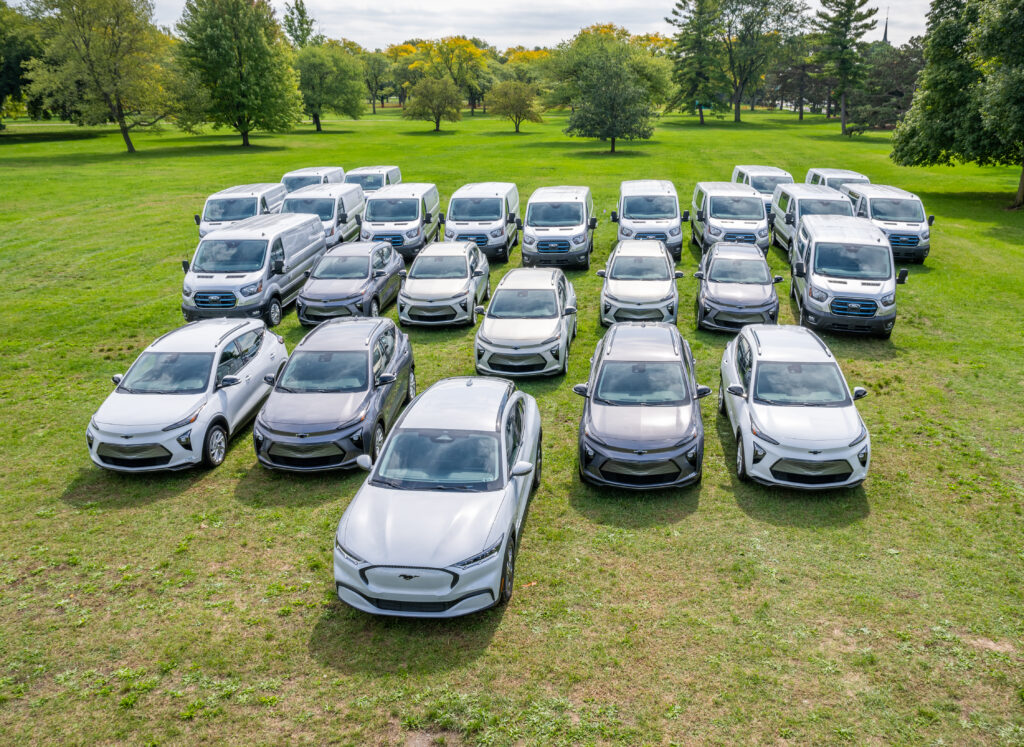
Consumers Energy launched its PowerMIFleet program 19 months ago to augment its existing PowerMIDrive. The latter program, launched in 2019, is targeted to smaller users and offers lower electric rates for off-peak charging for drivers and will provide rebates for residential, business, and public charging stations. More than 2,700 have been granted so far. PowerMIFleet was launched in mid-2021 to build on that program by connecting businesses, large institutions, local governments, and school bus fleets with planning resources, expert guidance, and financial incentives to easily and cost-effectively transition to electric vehicles. One of those large institutions, Michigan State University, is deep in the throes of transitioning 369 vehicles in its fleet of 1,200 internal-combustion vehicles to electric vehicles over the next decade and is working with Consumers Energy and the PowerMIFleet program to do so. SBN Detroit spoke with two individuals deeply involved in MSU’s process, beginning with Jeff Myrom, Consumers Energy director of electric transportation customer programs, and Adam Lawver, director of Campus Services Infrastructure Planning and Facilities at Michigan State University, to gain insights into the process and how it works for Michigan businesses. Q: Jeff, first tell us about the PowerMIFleet program. Myrom: PowerMIFleet is a program designed to help business owners, municipalities, and educational institutions charge off-peak to reduce operating costs, eliminate emissions, and simplify vehicle maintenance by transitioning to electric vehicles. This is a program for those looking to electrify multiple vehicles and potentially a variety of vehicle classes. This, along with PowerMIDrive, is aimed at gaining insights and learnings and then sharing those learnings with different sectors so we can optimize success in the future, and it supports the statewide goal of having 2 million EVs on our state roads by 2030. Q: How long have these programs been in existence? Myrom: PowerMIDrive has been in place for a little over three years. We are getting ready to convert the residential portion of this pilot to a permanent program. PowerMIFleet launched in June of 2021 and has been so successful that it’s now fully subscribed. Q: What is involved in the PowerMIFleet Pilot Program? Myrom: Essentially there are three phases. In this first phase, we are working with fifty customers across a wide geographic base within different industries and sectors. We conduct full assessments regarding their fleets and then develop a five-year plan for conversion and infrastructure. This longer-term plan allows us to build for the future now versus having multiple infrastructure upgrades over time. In Phase Two we move forward with EV infrastructure development and the purchase cycle begins for the customer. Phase Three involves taking a look at the actual experience with electrification to see if the infrastructure is adequate and circling back on lessons learned. For PowerMIFleet, this will take place in 2024. Q: Who are you working with through PowerMIFleet in addition to MSU? Myrom: We are currently working with over 50 customers, including several school districts. For example, Jackson Public Schools are looking to acquire 21 electric school buses. Homer Community School District is bringing on seven electric buses. We are working with Domino’s Pizza on their rollout of 800 GM Chevy Bolt electric vehicles now. We will publish our lessons learned from the vehicle electrification assessments starting in Q1 of 2023 and move from there. Q: What challenges do you face? Myrom: Vehicle availability and costs are a challenge. We recognize that until the supply chain is improved this will be the case. Another potential challenge for those with large fleets is adopting time-of-use rates. Usage across the state is highest between 2 p.m. and 7 p.m. We are offering several different time-of-use options to minimize costs for businesses and help alleviate this challenge. A good example of this is the work we are doing with Michigan State University. The PowerMIFleet program is providing rebates to MSU toward their charger installation costs, and we’ve supported the grid upgrades needed, as they prepared to take delivery of forty new EVs in September. Michigan State University is clearly a leader in fleet electrification, and one of the first movers in the PowerMIFleet pilot. Partnering with a leading educational institution like Michigan State University is a real boost to our fleet pilot learnings. Q: Adam, what should we know about your conversion to electrification with Consumers Energy and PowerMIFleet? Lawver: As part of our strategic plan goal of achieving climate neutrality by 2050 and reducing greenhouse gas emissions by 50% from its 2010 baseline, we are converting 369 internal combustion engine vehicles to fully electric vehicles over the next decade. The conversion will decrease the university’s overall carbon footprint by 18,945 metric tons of carbon dioxide long-term – the equivalent of planting 312,584 trees. In September 2021, we connected with Consumers and its PowerMIFleet program. Together we assessed our 1,200 vehicles and built fleet electrification roadmap. Now, one year later we’ve received all 40 vehicles of the initial order and are in process of connecting charging stations. Q: What manufacturers are you working with to build your fleet? Lawver: We selected different types and manufacturers, according to what they’d be used for. Some vehicles are used to move people short distances, some are utility vehicles, some are used by staff to travel around the state for meetings, and so forth, so they all have different uses and needs. So far, we have purchased a combination of Ford E-Transit Vans, Ford F150 Lightening Electric Trucks, Ford Mustang Mach-E’s,Chevy Bolts, and Tesla Model 3s. Q: What can businesses learn from your current experience of electrification and working with PowerMIFleet? Lawver: I think small businesses with a few delivery vans up to entities with large fleets would benefit from completing a fleet analysis and considering electrification. I think you first need to look at the total cost of ownership of your vehicles. Each business owner needs to assess that and evaluate it over their fleet and see if there is a good alternative to convert to decrease their carbon footprint. Then, build a roadmap for
DTE Talks About the Challenges and Opportunities in Building and Adopting EV Infrastructure
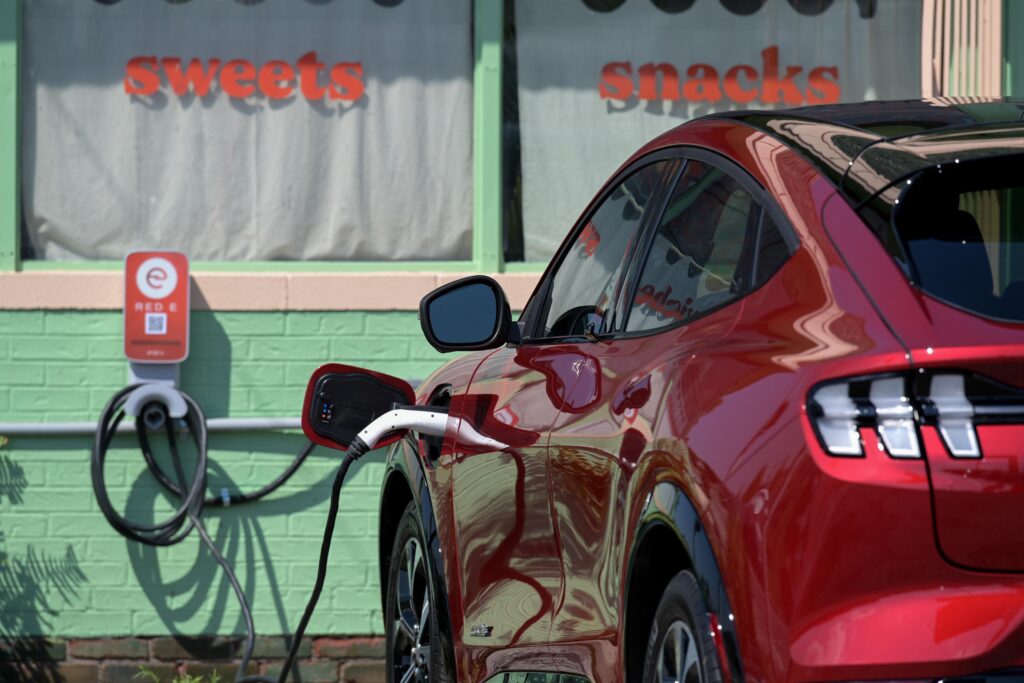
Widespread electric vehicle (EV) adoption is crucial for achieving climate goals. However, the pace of EV adoption varies significantly across different income sectors, markets, and geographies. There are significant barriers to EV entry that are hindering the overall pace of electrification including lack of charging infrastructure (range anxiety), charger access disparities, and affordability. Addressing these challenges is critical. SBND talked with Tony Tomczak, vice president of electric sales marketing for DTE Energy, about the company’s initiatives and partnerships designed to build infrastructure and capacity. Q: Is growth in EVs outpacing charging stations? How is DTE is working to address this? A: Yes, at the current rate of adoption, EVs are outpacing EV chargers. From January 2020 to October 2022, public EV chargers in Michigan increased from 1,070 to 2,300 and EVs increased from 21,500 to about 44,500. We recognize that access to EV chargers across the state can be a barrier for many when deciding to go electric. We offer businesses thousands in rebates to incentivize them to install EV chargers at their business, including retail, workplaces, multiunit dwellings, and schools. In the Q4 2022 report that we filed with the MPSC, we shared that we have approved 2,300 residential Level 2 EV chargers, 1,130 Level 2 rebates, and 120 CFC rebates. You can learn more about our business rebate program here. Q: A significant barrier to entry in EV ownership is range anxiety. What are the goals to convert drivers to EVs and the infrastructure in place to support them? A: The current charging infrastructure is not enough. While the biggest barrier to EV ownership is still the upfront vehicle and charger cost, range anxiety is also a barrier many of our customers face. The State of Michigan has an aspiration to deploy enough charging infrastructure to support two million EVs on the road by 2030. While we’re still a long way from that volume of EVs, in the meantime DTE is facilitating charging deployment through our EV programming and other partnerships to leverage available funding. Q: Michigan will receive a $110 million grant from the National Electric Vehicle Infrastructure (NEVI) Formula Program, as part of the Federal Infrastructure Law. There is a plan in place to install four 150 kilowatt – or greater – vehicle chargers spaced no more than 50 miles apart along each of the state’s designated Alternative Fuel Corridors, which include all seven of the state’s major highways that will serve as the backbone of Michigan’s vehicle charging network. These include I-96, I-75, I-696, I-275, I-69, I-196 and I-94. What is DTE’s involvement with this? The plan, and timing, is this enough? A: The plan is to closely collaborate with the Michigan Department of Environment Great Lakes, and Energy (EGLE) to review and identify ideal sites that are eligible for NEVI funds and which can be layered with our EV programming incentives and rebates. Ideal sites are defined as well-lit areas that are publicly accessible 24/7, and usable by people with disabilities. Preference will be given to sites that have amenities for the EV drivers (e.g., food, bathroom, seating indoors) within 0.25 miles of walking distance on pedestrian-friendly routes and are within two miles of driving distance of an interstate, U.S., or state highway. We will be participating with the state’s committee to review and vote for NEVI projects. The EGLE request for proposal (RFP) solicitation to organizations that are interested in receiving NEVI funding is scheduled to go out this winter, and the committee will come together sometime in Q2. NEVI projects will begin to be awarded later this year. Additionally, since DTE’s Charging Forward rebated make-ready model leverages other funding by design, we will continue to collaborate with EGLE’s Charge Up Michigan team. Since launch, we have approved 48 Charging Forward sites which will also receive a combined $1.3 million in funding from the Volkswagen (VW) settlement funds that EGLE is managing. There is another potential ~$5 million in funding currently going through the Charge Up Michigan evaluation process, and DTE will continue to work closely with state agencies as the process for NEVI funding distribution becomes clearer. Q: According to the Michigan Future Mobility Plan, the state will install 100,000 vehicle chargers to support 2 million electric vehicles by the year 2030. To meet the goal over 12,000 vehicle chargers would need to be installed per year. Is this possible? What is DTE’s involvement? A: Similar to our involvement with the EGLE program, DTE partners with the Michigan Future Mobility Plan by facilitating charging deployment through our EV programming and leveraging their partnership for additional available funding. To date, we have installed over 780 public chargers within the communities in our service territory and will continue to do so with the continued EV programming rebates and incentives. Q: Michigan is quickly becoming a center of U.S. battery manufacturing. What are the job implications of this? A: We are excited that many electric vehicle automakers and suppliers, including battery manufacturers, are continuing to call Michigan home. One of the many benefits of driving electric vehicles is knowing that the fuel is made in Michigan, by Michiganders, which stimulates our local and state economies. The significant amount of charging infrastructure required is creating jobs for local installers and maintenance providers. The DOE has the JOBS EVSE tool which allows users to estimate the economic impact of EVs, including charging infrastructure, job creation, and local spending. Q: What can you tell us about your partnership with Volta Charging which received a Michigan Mobility Funding Platform grant and other programs we haven’t talked about so far? A: Our portfolio of EV programming is designed to reduce the barriers to EVs for our customers. Our partnership with Volta was just one example of bringing our goals to fruition and enabling equitable access to EVs by deploying chargers in lower-income or rural communities that have not seen as much investment to date. Volta chargers are unique since they also act as a platform for education with their


